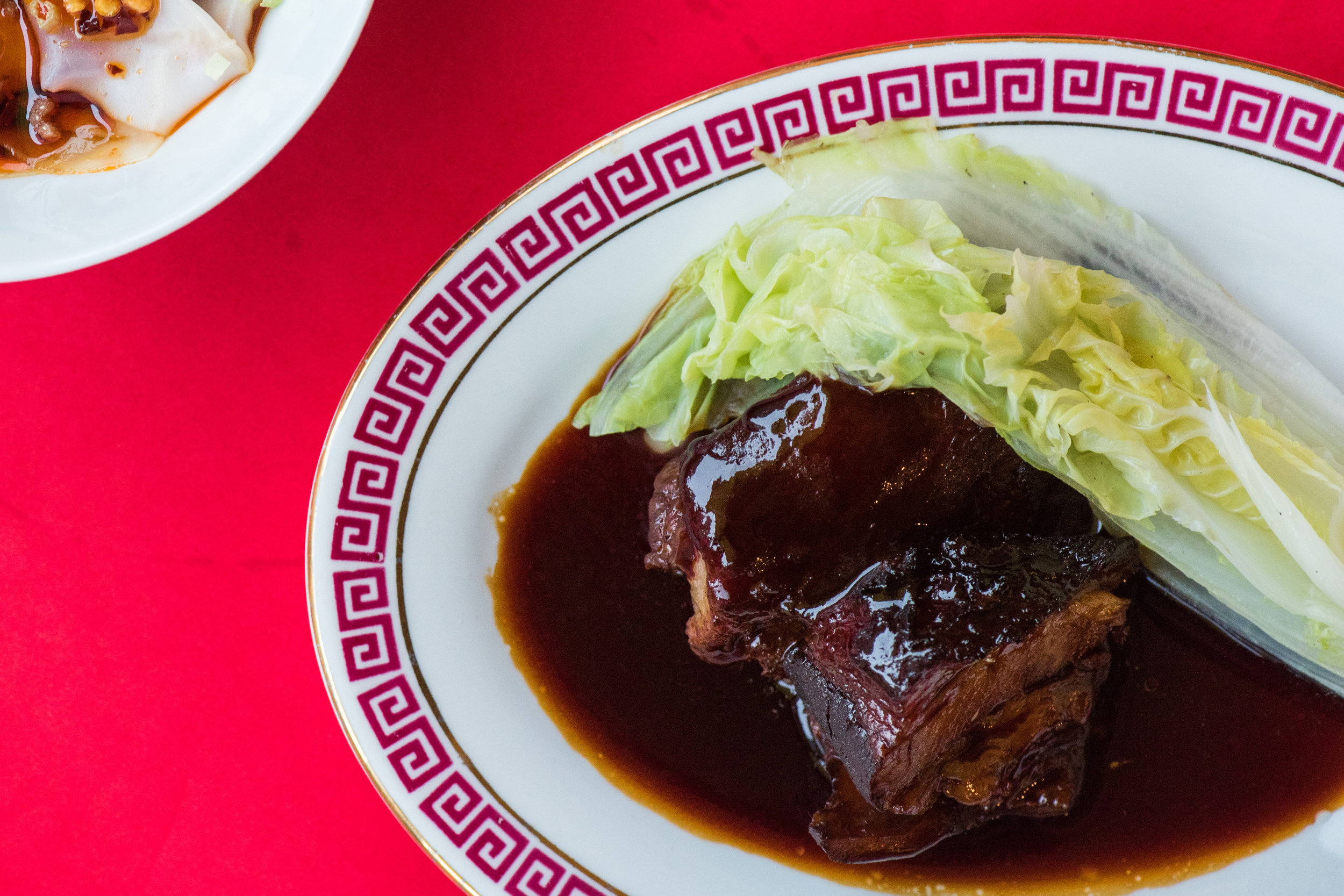A Red New Year
February Junzi Chef's Table
For our February Chef's Table, we explored the Chinese history of the color red, a color that is more apparent in Chinese cuisine than anywhere else.
Red Soaked: Lotus root soaked in a medicinal braising liquid in two stages until tender
- Menu, February 2018 -
RED OIL: WONTONS
pork & leek, blood orange, "modified" sauce
RED-SOAKED: LOTUS ROOT
green sichuan peppercorns, brooklyn tofu, sesame
RED FURU: OYSTER MUSHROOM
sichuan bacon, pickled woodear, pomelo
RED-COOKED: PORK BELLY
eight treasure rice, napa cabbage, flowers
RED SYRUP: DUMPLINGS
osmanthus, roasted soy bean flour
Originally a southern condiment, Red Furu is fermented with yeast rice, rose wine, and caramel for color
You can't mention the color red in sichuan cooking without Red Oil dumplings:
The assumption is that () refers to the top sheen of oil, but the equally interesting bottom layer is () which refers to the fortified soy sauce
Our soy sauce is cooked down with black sugar, Chinese licorice, ginger, galangal, chilis, etc.
Finally the pork and celery wontons are served with a squeeze of blood orange and chervil.
Red Cooked: A common technique, likely invented in Jiangsu, but now as popular in imperial kitchens as in home kitchens. it's usually a braise of spices, soy sauce, and sugar.
There's no soy sauce, the red color comes from a caramel. in the absence of soy sauce, the other spices have a bit more room to shine., producing a pork belly that's wonderfully succulent and nuanced.
Our pork dish is served with celebratory 8 treasures rice
We hope to see you at the next Junzi Chef's Table. Get your spot before it sells out, your tastebuds will thank you.
Junzi Chef's Table is a monthly dinner series that extends Junzi flavors beyond our everyday menu, and explores the narrative of Chinese cuisine as it intersects with areas of food, drink, and culture. Chef and Culinary Director Lucas Sin curates a five-course tasting menu with a different theme every month. All you need to bring is your curious appetite.












